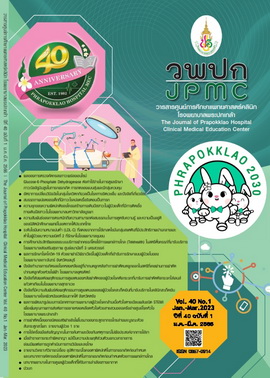Pediatric Nursing Care during Aeromedical Transport: Nursing Role
Main Article Content
Abstract
Pediatric patients transferred by Aeromedical Transport System (ATS) to a tertiary care is one of the fastest and efficient transferring options available on long-distance flights especially between countries. Through aeromedical transportation, pediatric patients’ survival rates increase and quality of life improves. However, during air transportation these vulnerable patients encounter stress of flight that induce unfavorable effects to the patients. Therefore, nursing plays a vital role in taking care of the patients’ safety not only before (preflight) and during the flight but also after the flight (post-flight).
Article Details

This work is licensed under a Creative Commons Attribution-NonCommercial-NoDerivatives 4.0 International License.
References
Veldman A, Krummer S, Schwabe D, Diefenbach M, Fischer D, Schmitt-Kästner S, et al. Safety and feasibility of long-distance aeromedical transport of neonates and children in fixed-wing air ambulance. J Pediatr Intensive Care [Inteernet]. 2021 [cited 2022 Aug 28]. Available from: https://www.thieme-connect.com/products/ejournals/pdf/10.1055/s-0041-1731681.pdf
Mortamet G, Harrington K, Raffin H, Menat Y, Oualha M, Renolleau S. Aeromedical transport in children: a descriptive analysis of 96 cases. Pediatr Emerg Care. 2020;36:31-3.
Fouts B, Mortimer D. Stresses of flight during aeromedical transport: an integrated review [Internet]. 2018 [cited 2022 Aug 9]. Available from: https://apps.dtic.mil/sti/pdfs/AD1056007.pdf
De Pin Raduenz SB, Dos Santos JLG, Lazzari DD, do Nascimento ERP, do Nascimento KC, Moreira AR. Nurses' responsibilities in the aerospace environment. Rev Bras Enferm [Internet]. 2020[cited 2022 Sep 19];73(4):e20180777. Available from: https://www.scielo.br/j/reben/a/vxLKR4HkPnK5MKmk8nSCsqk/?format=pdf&lang=en
Dias CP, Chrispim Silva MA, Santos MS, Lopes Ferreira FL, Carvalho VP, Alves M. The interdisciplinary team experiences of managing patient safety during a fixed-wing inter-hospital aeromedical transport: a qualitative study. Int Emerg Nurs [Internet]. 2021 [cited 2022 Sep 19];58:101052. Available from: https://doi.org/10.1016/j.ienj.2021.101052
Braithwaite I, Cox S. Considerations for infant aeromedical transport in England. Infant [Internet]. 2016 [cited 2022 Sep 19];12:118-22. [cited 2022 Sep 19]. Available from: https://www.infantjournal.co.uk/pdf/inf_070_nsi.pdf
Goswami I, Redpath S, Langlois RG, Green JR, Lee KS, Whyte HEA. Whole-body vibration in neonatal transport: a review of current knowledge and future research challenges. Early Hum Dev [Internet]. 2020[cite 2022 Sep 18];146:105051. Available from: https://www.sciencedirect.com/science/article/abs/pii/S0378378220302139
Araiza A, Duran M, Surani S, Varon J. Aeromedical transport of critically ill patients: a literature review. Cureus [Internet]. 2021[cited 2022 Sep 12];13(5):e14889. Available from: https://www.cureus.com/articles/54119-aeromedical-transport-of critically-ill-patients-a-literature-review
James D, Talbot LA. Neonatal aeromedical evacuation during COVID-19: an interview with captain Danielle James. Mil Med. 2021;186(12 Suppl 2):74-80.
Sasidharan S, Montagnon S, Kapur R, Dhillon HS. Experience of Indian army’s aeromedical evacuation of casualities. Rev Chil Anest [Internet]. 2021 [cited 2022 Sep 5];50:789-98. Available from: http://revistachilenadeanestesia.cl/PII/revchilanestv5030091500.pdf
Singer D. Pediatric hypothermia: an ambiguous issue. Int J Environ Res Public Health [Internet]. 2021[cited 2022 Sep 18];18:11484. Available from: https://www.ncbi.nlm.nih.gov/pmc/articles/PMC8583576/pdf/ijerph-18-11484.pdf
Kajornboon S, Atmungkun P, Verayangkura N, Wongyai U, Phaengma A, Suphap C, et al. Emergency aeromedical service guideline revision 2014. Nonthaburi: National Institute for Emergency Medicine;2014.
Karam O, Roy M, Barrington K, Janvier A. Long-distance air transport of an infant weighing less than 500 g: Is it in the patient's best interest?. Paediatr Child Health 2011;16:79-81.
